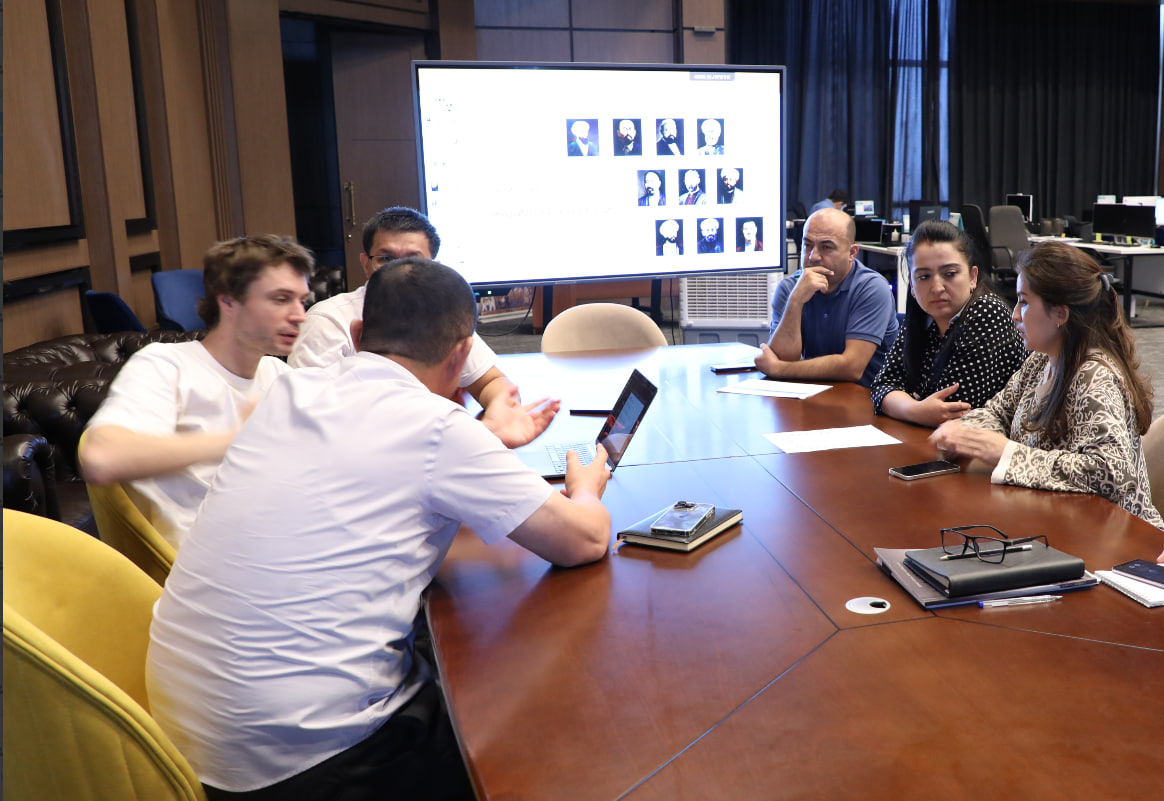“Uzbekistan in the 20th Century” — an exhibition combining animation and history is in its final stage
🔴From the national awakening to the Independence celebration
🔴A panorama of time and events

The “Uzbekistan in the 20th Century” section of the Center of Islamic Civilization in Uzbekistan is now in its final stage of development. Designed under the initiative and concept of the President of our country, this section covers significant periods in our nation’s history the Jadid movement, the former Soviet era, and the years of independence.
The first part of the exhibition focuses on the Jadid period. It depicts the establishment of new-method schools, the publication of newspapers and magazines, the creation of textbooks, the development of theater arts, and the activities of cultural and educational centers. It also presents information on the work of the Jadids and their fates.
The second part covers the former Soviet era, highlighting social, political, and economic processes; the Babakhanov family’s efforts to preserve religious life; the political career of Sharof Rashidov; the construction of the metro and other major facilities; as well as the hardships of that period.
The third part is dedicated to the independence era. It showcases the adoption of state symbols, economic and social reforms, the restoration of national and religious values, the official recognition of Navruz and religious holidays as public holidays, the development of the national army and economy, and initiatives to immortalize the memory of the First President of Uzbekistan, Islam Karimov.
A project discussion brought together the authors, historians, and designers from Russia’s “Sila sveta” company. They reached an agreement on the structure and content of the exhibition, the selection of exhibits and documents, and the presentation of historical events through animations and video clips.
In the proposed concept, historical events will be vividly and impressively displayed on screen.
For example:
▪️ During the Second World War, scenes will depict Russian intellectuals arriving in Tashkent, including the words of Anna Akhmatova about the capital. Information on nearly two million Uzbeks who went to war, as well as images of empty fields, canal construction, cotton harvesting, and industrialization processes, will be presented in sequential animation.
▪️ In the Tashkent earthquake scene, a crack effect will appear on screen, revealing behind it the city’s reconstruction process. Archival photos and film footage will bring to life the cultural sites, collective farm life, and construction work of that era.
▪️ The independence section will carry a celebratory tone, displaying symbolic landmarks of the capital, the National Army, economic and cultural growth, and the symbols of independence. The state emblem of Uzbekistan will be assembled step by step, with the national flag and musical themes harmoniously integrated in the background.

The main goal is to convey historical events in a coherent narrative, blending animation and live scenes in a unified style.
According to the Center’s officials, the renewed exhibition will present knowledge about Uzbekistan’s 20th-century history in a modern, impactful, and visually rich format.
Most read

Over 100 experts from more than 20 countries of the world are in Tashkent!

The Center for Islamic Civilization – a global platform leading towards enlightenment

The museum of the Center for Islamic Civilization in Uzbekistan has been further enriched: unique artifacts from different parts of the world have been presented as gifts











